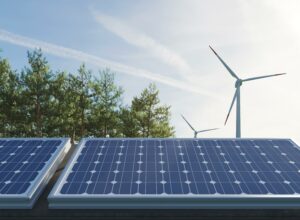The Kerala State Electricity Regulatory Commission (KSERC) has now released new renewable energy regulations for the period from fiscal year 2025-26 to 2029-30, marking a major step toward building a smarter, more sustainable solar energy network.
The 2020 regulations have been replaced by these new ones, which mark a significant change in Kerala’s solar energy generation, consumption, and grid integration. It is essential to understand these changes if you are considering installing a solar panel system or are already enjoying its benefits.
The New Metering Options
The biggest highlight of the new regulations is the wide variety of metering systems now available. While Net Metering used to be the main option, KSERC has now introduced several new ways to suit different types of customers and business models.
Net Metering: With a new capacity limit, this popular system lets you feed extra power into the grid and draw it back later. The system capacity is now limited to 3 kW for all residential, commercial, and agricultural users. A significant exception exists: the limit is raised to 5 kW if you choose a hybrid inverter and a battery system with at least 30% storage capacity. This new rule encourages adding energy storage to your system. A battery can make your solar setup more reliable and give you backup power during blackouts. It’s also good to know that if you already have a solar system that was approved under the old rules, it will keep working just as it always has under its current contract.
Net Billing: Systems with 1 kW to 500 kW of solar panels can use this new system. Both the excess energy you export to the grid and the energy you use from it are billed separately under net billing. You pay the standard retail tariff for the power you use, and you receive a predetermined Feed-in Tariff for the excess power you send to the grid. More transparency is offered by this model, which is especially advantageous for medium- to large-scale consumers who produce a significant surplus of electricity.
Gross Metering: This model is designed for all consumers, including those who are not connected to the grid. System capacities ranging from 1 kW to 3000 kW are covered. Regardless of your personal consumption, you are compensated for all the electricity produced by your solar system when you use gross metering. After that, you pay the regular retail prices for all of the electricity you use from the grid. This option turns your solar system into a source of income, which makes it a good option for big businesses.
Innovative Metering Solutions
In order to support contemporary living and community-based initiatives, the new KSERC regulations also introduce innovative ideas.
Virtual Net Metering: This system is a great choice for shared living spaces like flats, residential associations, and even government buildings. It allows multiple users to draw power from one large solar plant, with each person able to manage the energy on their own account. This model requires a minimum system size of 10 kW.
Group Net Metering: This system lets a single user install a solar system at one location and then apply the energy generated across several different properties on the same tariff. For companies with multiple branches or locations, this is a very flexible and efficient way to manage energy use.
Behind the Meter: This is for customers who want to generate renewable energy just for their own use. It’s a system just for your use, created to meet your energy needs without feeding any excess power back into the grid.
Conclusion
The new KSERC renewable energy regulations for 2025 mark an important milestone in Kerala’s journey toward cleaner and more efficient energy use. By introducing diverse metering options and innovative models, these rules aim to make solar power more accessible, flexible, and future-ready for households, businesses, and communities. While the changes may seem complex at first, they open up new opportunities for energy independence, cost savings, and long-term sustainability. Ultimately, these regulations reflect Kerala’s commitment to building a smarter energy network and encouraging more people to embrace renewable power as a reliable part of daily life.






